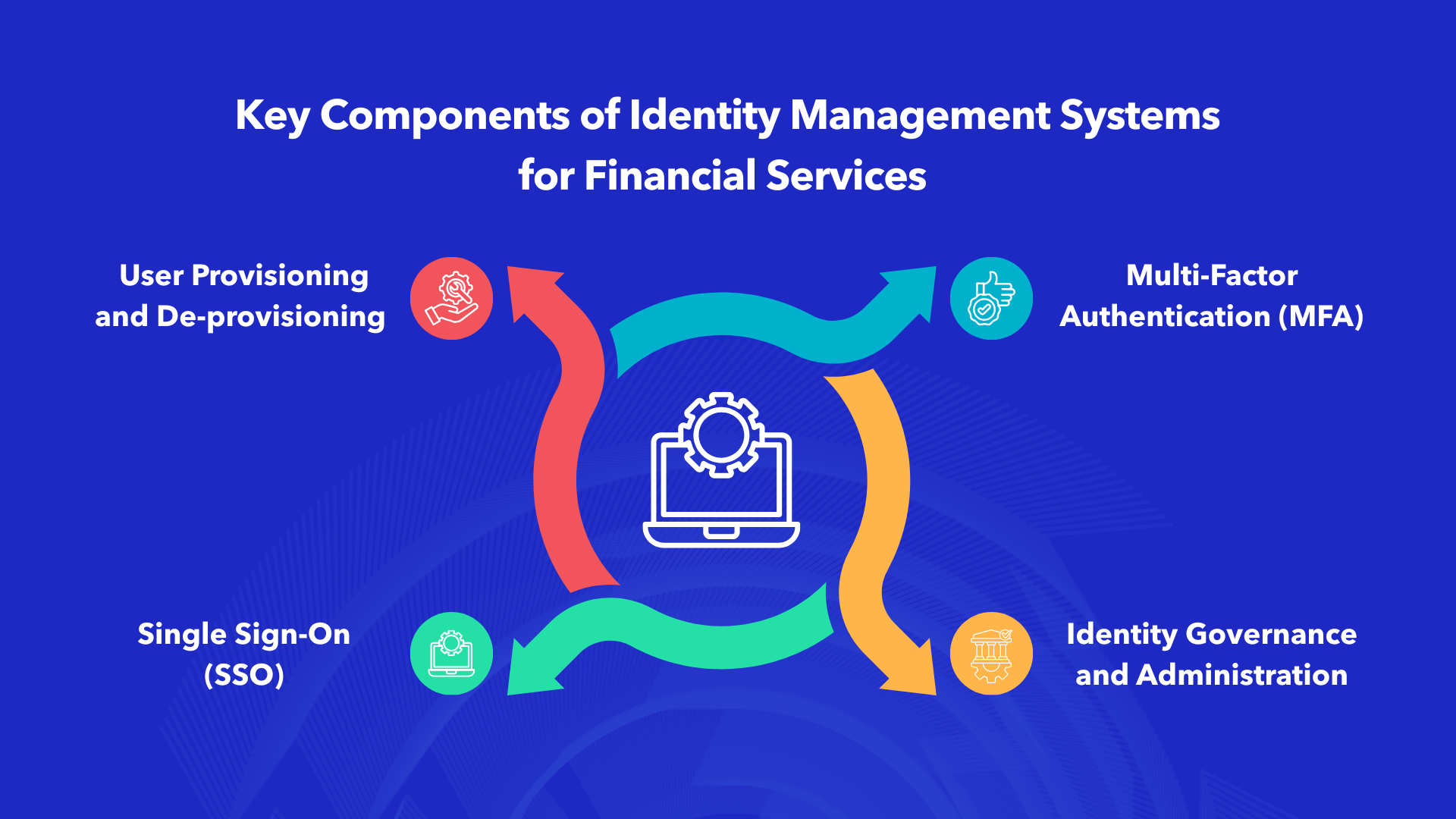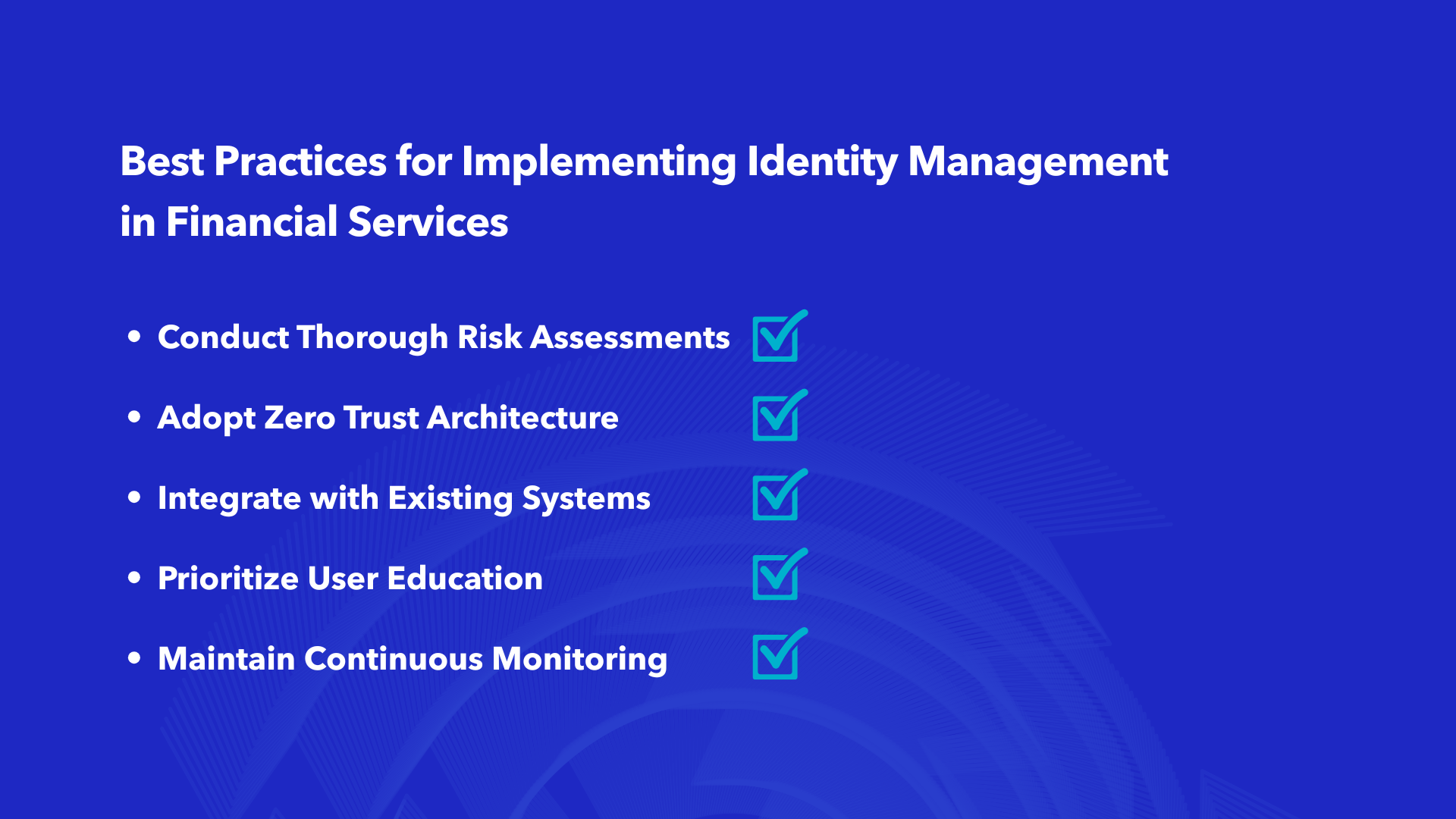In Saudi Arabia’s rapidly evolving financial landscape, securing digital transactions has become a mission-critical priority for banks, fintech companies, and financial institutions. As the Kingdom advances toward its Vision 2030 goals, the financial sector faces unprecedented challenges in balancing digital innovation with robust security measures. Identity management for financial services has emerged as the cornerstone of this transformation, offering complete protection against fraud, unauthorized access, and compliance violations.
Why Identity Management for Financial Services is Critical in Saudi Arabia
The financial services sector in Saudi Arabia is experiencing remarkable growth, driven by digital transformation initiatives and increasing consumer adoption of online banking. However, this rapid digitalization has also introduced sophisticated security threats that target the weakest link in any financial system: user identity. Financial institutions now process millions of daily transactions, each representing a potential vulnerability if proper identity verification mechanisms are not in place.
Identity management for financial services addresses these challenges by implementing multi-layered authentication protocols, continuous monitoring systems, and advanced verification technologies. These solutions ensure that every transaction is linked to a verified, authorized user, significantly reducing the risk of financial fraud and data breaches.
Understanding Identity Management for Financial Services: Core Framework
Identity management for financial services encompasses the integrated framework of technologies, policies, and procedures designed to authenticate users, manage access privileges, and protect sensitive financial data. At its core, this system ensures that only authorized individuals can access specific resources at designated times and for legitimate purposes.
Modern identity access management solutions go beyond traditional username-password combinations. They integrate biometric authentication, behavioral analytics, risk-based authentication, and real-time fraud detection capabilities to create robust defense mechanisms against evolving cyber threats. For Saudi financial institutions, implementing these advanced systems is not merely a security upgrade—it’s a regulatory requirement and business imperative.
SAMA Compliance Requirements for Identity Management in Financial Services
The Saudi Central Bank (SAMA) has established stringent regulations governing identity verification and authentication processes within the financial sector. These requirements, outlined in the Anti-Money Laundering and Counter-Terrorism Financing framework, mandate that financial institutions implement robust Know Your Customer protocols and strong identity verification mechanisms.
SAMA’s Minimum Verification Controls: Core Requirements
| Control Category | Mandatory Requirements | Implementation Details |
| User Authentication | Secure identity verification | – Verify user identities during registration
– Implement strong authentication methods based on risk profile – Validate identity against government databases |
| Phone Verification | Ownership validation | – Verify phone number ownership through trusted third parties
– Link phone numbers to national ID records – Ensure SMS delivery to verified numbers only |
| Device Management | Single device assignment | – Link each application to one device only
– Require OTP for multi-device access – Implement secure device re-registration processes |
| OTP Security | One-time password controls | – Deploy OTP as standard verification method
– Implement session timeout controls – Enforce OTP expiration policies |
| User Notifications | SMS alert requirements | – Send notifications for registration events
– Alert on account status changes – Notify users of device re-registration |
| Account Management | Activation/deactivation controls | – Develop secure deactivation processes
– Implement reactivation verification steps – Maintain audit trails for all changes |
Compliance Scope
| Organization Type | Regulatory Obligations |
| Commercial Banks | Full SAMA Cybersecurity Framework + MVC compliance |
| Islamic Banks | Full SAMA Cybersecurity Framework + Sharia-compliant controls |
| Fintech Companies | MVC + CRFR (Cyber Resilience Fundamental Requirements) |
| E-Wallet Providers | Strong authentication + transaction monitoring |
| Lending Platforms | KYC compliance + identity verification standards |
| Payment Service Providers | PCI-DSS + SAMA payment security requirements |
Data Protection and Privacy Requirements (PDPL Alignment)
| Requirement | Implementation Mandate |
| Data Collection | Collect identity data lawfully with explicit customer consent |
| Data Processing | Process data only for specified, legitimate purposes aligned with SAMA guidelines |
| Data Storage | Implement secure storage with encryption at rest and in transit |
| Access Controls | Restrict access to authorized personnel only with role-based permissions |
| Data Retention | Maintain records according to SAMA’s regulatory timeframes (minimum 10 years) |
| Audit Trails | Document all identity-related activities with immutable logs for compliance verification |
| Breach Notification | Report security incidents to SAMA within 72 hours of detection |
Learn more about SAMA compliance requirements and how Alnafitha IT can help your organization achieve full regulatory alignment.
Key Components of Identity Management Systems for Financial Services
Effective identity management for financial services relies on several interconnected components that work together to create a seamless yet secure authentication environment:

User Provisioning and De-provisioning
Automated user provisioning ensures that new accounts are created with appropriate access levels based on predefined role-based access control policies. When employees leave or customers close accounts, de-provisioning mechanisms immediately revoke access rights, eliminating the risk of unauthorized access through orphaned accounts.
Multi-Factor Authentication (MFA)
MFA adds critical security layers by requiring users to verify their identity through multiple independent credentials. This typically includes something the user knows (password), something they have (mobile device or security token), and something they are (biometric data). For financial transactions, MFA significantly reduces the risk of account takeover attacks and unauthorized fund transfers.
Single Sign-On (SSO)
SSO capabilities allow users to access multiple financial applications and services with a single set of credentials. This not only improves user experience but also reduces password fatigue and the associated security risks of password reuse across platforms.
Identity Governance and Administration
Identity governance ensures that access privileges are regularly reviewed, validated, and adjusted based on changing roles and responsibilities. This includes periodic access certifications, segregation of duties enforcement, and audit trail maintenance for compliance purposes.
Biometric Authentication in Identity Management for Financial Services
Biometric authentication has revolutionized identity management for financial services by introducing authentication methods that are significantly more secure than traditional passwords. Fingerprint recognition, facial recognition, and iris scanning provide unique identifiers that are extremely difficult to replicate or steal.
Saudi financial institutions are increasingly adopting biometric solutions to enhance customer onboarding processes and transaction authorization. These technologies align with SAMA’s requirements for strong authentication while simultaneously improving customer experience through faster, more convenient verification processes. The integration with government platforms like Absher.sa has further streamlined identity verification, enabling financial institutions to validate customer identities against official government records in real-time.
How Identity Management for Financial Services Protects Against Cyber Threats
Financial institutions face numerous identity-related cyber threats, including credential theft, account takeover attacks, synthetic identity fraud, and insider threats. Advanced identity management systems deploy multiple defensive mechanisms to counter these threats:
Behavioral Analytics: Machine learning algorithms analyze user behavior patterns to detect anomalies that may indicate compromised credentials or fraudulent activity. Unusual login locations, atypical transaction patterns, or suspicious access attempts trigger automated security responses.
Risk-Based Authentication: This adaptive approach adjusts authentication requirements based on the risk level of each transaction. High-value transfers or access requests from unfamiliar devices may require additional verification steps, while routine activities proceed with standard authentication.
Privileged Access Management: Financial institutions must carefully control access to critical systems and sensitive data. Privileged access management solutions monitor, record, and control administrative access, preventing both external attackers and malicious insiders from exploiting elevated privileges.
Discover Alnafitha IT’s full scale cybersecurity solutions designed to protect financial institutions against sophisticated cyber threats.
Cloud-Based Identity Management for Financial Services in Saudi Arabia
As Saudi financial institutions migrate to cloud-based infrastructure and adopt hybrid IT environments, identity management systems must extend protection across on-premises and cloud platforms. Cloud-based identity management for financial services offers several advantages, including scalability, reduced infrastructure costs, and simplified management of distributed workforces.
However, cloud adoption introduces unique security considerations. Financial institutions must ensure that identity data is encrypted both in transit and at rest, access controls are consistently enforced across all platforms, and audit logs capture all identity-related activities regardless of where they occur. Solutions that provide centralized identity management across hybrid environments enable consistent security policies while maintaining flexibility for business operations.
Enhancing Customer Experience Through Seamless Authentication
While security remains paramount, financial institutions must balance protection with user convenience. Customers expect frictionless digital experiences, and excessive authentication steps can lead to frustration and abandoned transactions. Modern identity management for financial services addresses this challenge through intelligent authentication workflows that adapt to risk levels and user contexts.
For low-risk activities, such as checking account balances, simplified authentication methods may suffice. However, high-value transactions or sensitive account modifications trigger step-up authentication, requiring additional verification. This risk-adaptive approach maintains strong security without compromising user experience during routine interactions.
Self-service identity management capabilities further enhance customer satisfaction by enabling users to reset passwords, update contact information, and manage their authentication preferences without requiring helpdesk assistance. This reduces operational costs for financial institutions while empowering customers with greater control over their accounts.
Best Practices for Implementing Identity Management in Financial Services

Successful implementation of identity management for financial services requires careful planning and execution. Financial institutions should consider the following best practices:
Conduct Thorough Risk Assessments: Identify critical assets, potential vulnerabilities, and threat vectors specific to your institution’s operations and customer base. This assessment informs the design of authentication policies and security controls.
Adopt Zero Trust Architecture: Implement a security model that assumes no user or device is inherently trustworthy. Every access request must be verified, authenticated, and authorized based on current risk assessments and access policies.
Integrate with Existing Systems: Ensure that identity management solutions seamlessly integrate with core banking systems, payment platforms, customer relationship management tools, and security information and event management systems. This integration provides complete visibility and coordinated security responses.
Prioritize User Education: Train both employees and customers on security best practices, including recognizing phishing attempts, creating strong passwords, and protecting authentication credentials. Human factors remain critical in maintaining effective security.
Maintain Continuous Monitoring: Deploy real-time monitoring systems that detect suspicious activities, policy violations, and potential security incidents. Automated alerts enable rapid response to emerging threats before they escalate into serious breaches.
Explore Alnafitha IT’s identity and access management services that help financial institutions implement robust security frameworks while maintaining operational efficiency.
Compliance Automation Through Identity Management for Financial Services
SAMA regulations require financial institutions to maintain detailed audit trails documenting all identity-related activities, including authentication attempts, access grants, privilege changes, and security incidents. Manual compliance processes are time-consuming, error-prone, and difficult to scale as organizations grow.
Advanced identity management systems automate compliance reporting by continuously collecting and analyzing identity data, generating reports that demonstrate adherence to regulatory requirements, and flagging potential violations for immediate investigation. These systems maintain immutable audit logs that serve as evidence during regulatory examinations and support forensic investigations following security incidents.
Automated identity certification campaigns periodically require managers to review and approve employee access privileges, ensuring that access rights remain appropriate and aligned with current job responsibilities. This ongoing governance process prevents privilege creep and maintains the principle of least privilege across the organization.
The Business Case for Advanced Identity Management
Beyond regulatory compliance and security benefits, identity management for financial services delivers substantial business value. Organizations that implement robust identity management systems experience reduced help desk costs through self-service capabilities, improved operational efficiency through automated provisioning, enhanced customer trust through strong security measures, and accelerated digital transformation initiatives enabled by secure access frameworks.
Financial institutions also benefit from reduced liability and potential financial losses associated with data breaches and fraud incidents. The cost of implementing advanced identity management systems represents a fraction of the potential losses from a single significant security breach, making this investment both prudent and economically justified.
Choosing the Right Identity Management for Financial Services Provider
Implementing and maintaining sophisticated identity management for financial services requires specialized expertise, ongoing support, and access to leading security technologies. Financial institutions benefit significantly from partnering with experienced IT solutions providers who understand both the technical requirements and regulatory landscape of the Saudi financial sector.
Alnafitha IT, with over 30 years of experience serving Saudi businesses across diverse industries, offers complete identity and access management solutions tailored to the unique needs of financial institutions. Our team of subject-matter experts provides end-to-end support, from initial architecture assessment and solution design through implementation, integration, and ongoing management.
We deliver solutions that integrate seamlessly with existing infrastructure, whether cloud-based or on-premises, ensuring centralized identity management, streamlined user provisioning, robust authentication mechanisms, and full compliance reporting. Our specialists work closely with your security and IT teams to implement best practices that align with SAMA requirements while supporting your business objectives.
Learn more about Alnafitha IT’s risk and compliance solutions designed specifically for the financial services sector.
Future Trends in Identity Management for Financial Services
The identity management landscape continues to evolve with emerging technologies and changing threat vectors. Saudi financial institutions must prepare for several key trends that will shape the future of transaction security:
Decentralized Identity: Blockchain-based identity systems that give users greater control over their personal information while enabling secure verification without centralized repositories.
Artificial Intelligence and Machine Learning: Advanced analytics that detect sophisticated fraud patterns, predict emerging threats, and automate security responses with minimal human intervention.
Passwordless Authentication: Widespread adoption of biometric and token-based authentication methods that eliminate password-related vulnerabilities entirely.
Quantum-Resistant Cryptography: As quantum computing advances, financial institutions must prepare for new encryption standards that protect identity data against future computational capabilities.
Conclusion: Identity Management for Financial Services as a Strategic Priority
Identity management for financial services represents far more than a security technology—it’s the foundation upon which Saudi Arabia’s digital financial future is being built. As the Kingdom continues its ambitious Vision 2030 transformation, financial institutions that prioritize robust identity management will gain competitive advantages through enhanced security, improved customer experiences, and streamlined compliance with regulatory requirements.
The challenges are significant, but the solutions are proven and accessible. By implementing integrated identity management frameworks that incorporate advanced authentication technologies, continuous monitoring capabilities, and automated compliance mechanisms, Saudi financial institutions can confidently pursue digital innovation while protecting customer assets and maintaining regulatory compliance.
The time to act is now. Every day without adequate identity protection represents unnecessary risk and potential liability. Financial institutions that delay implementation face growing exposure to sophisticated cyber threats, regulatory penalties, and reputational damage that can take years to overcome.
Get Started with Identity Management for Financial Services Today
Alnafitha IT stands ready to help your institution implement world-class identity management for financial services. Our proven expertise, complete solution portfolio, and deep understanding of SAMA requirements position us as your ideal partner for securing financial transactions and protecting customer identities.
Don’t leave your organization vulnerable to identity-based threats. Contact our team today to schedule a consultation and discover how Alnafitha IT’s identity and access management solutions can transform your security posture while enabling seamless digital experiences for your customers.
Together, we’ll build the secure financial infrastructure that Saudi Arabia’s digital future demands.
